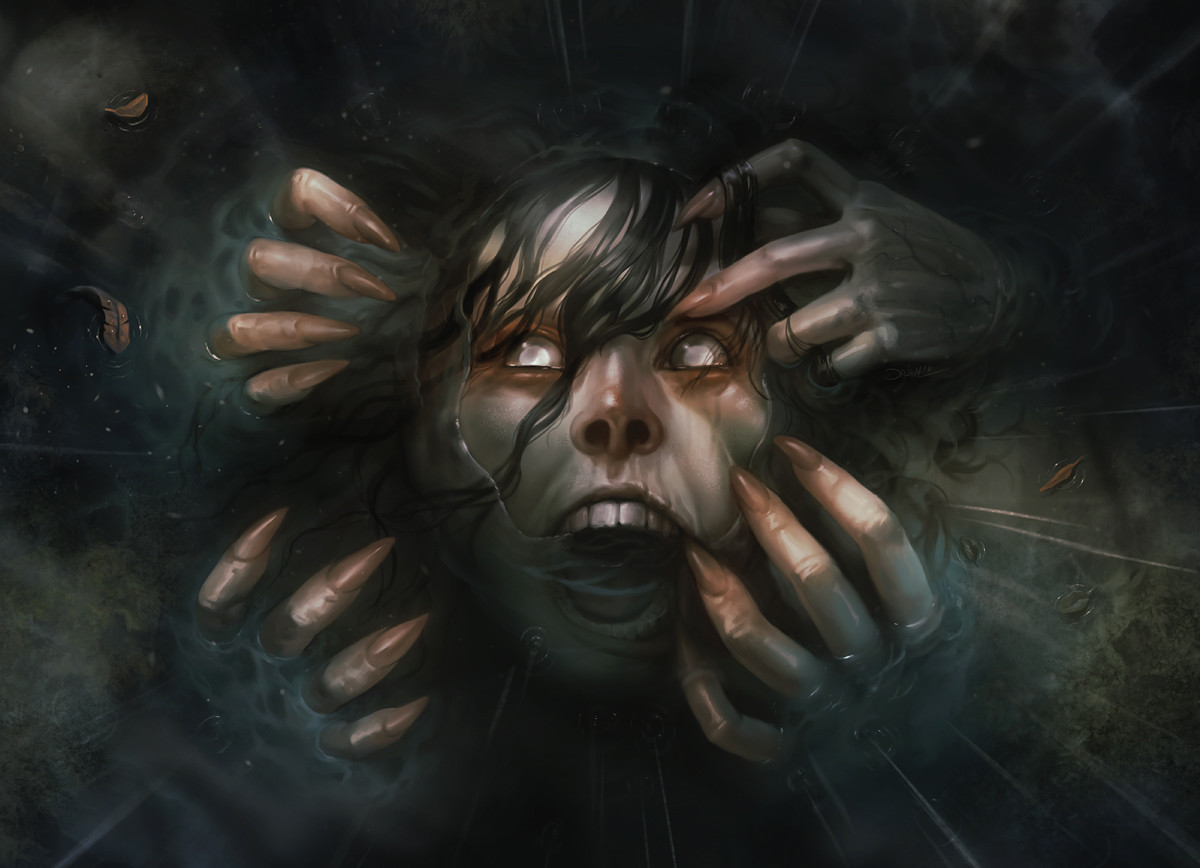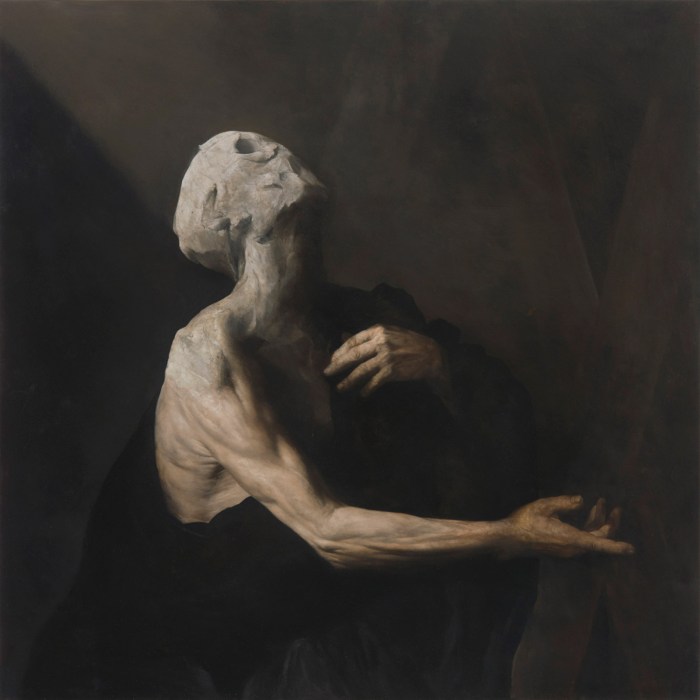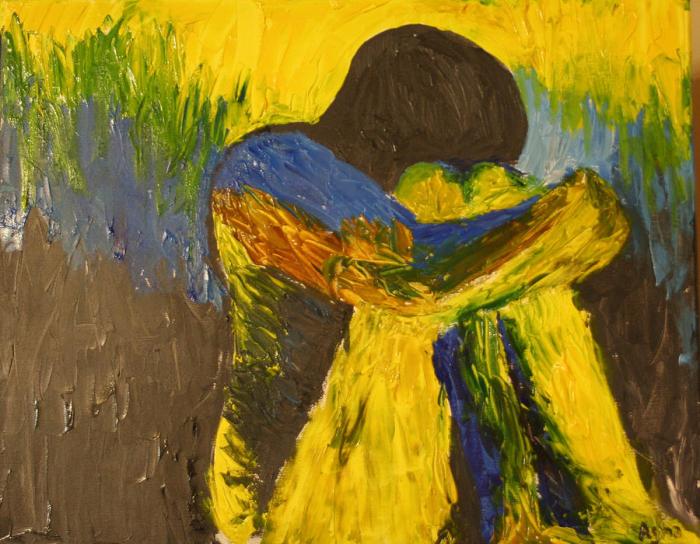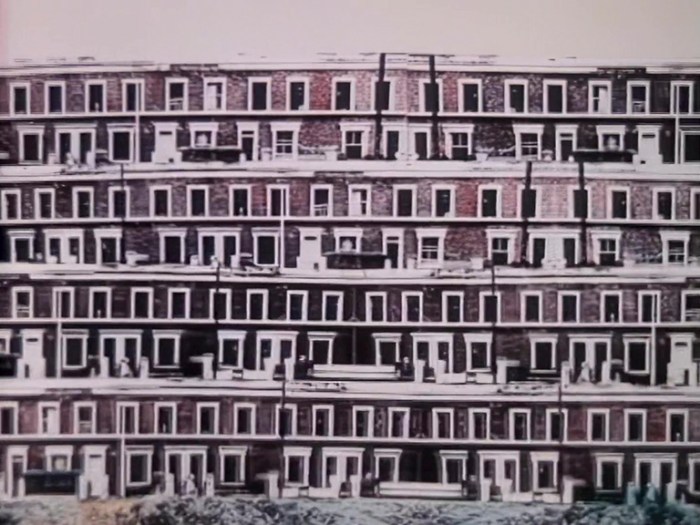Umbris Fear Manifest Art: Delving into this evocative phrase unveils a world of artistic expression born from the shadows of fear. It’s a journey into the depths of human emotion, where darkness isn’t merely an absence of light, but a canvas upon which unsettling beauty is painted. We’ll explore how artists across history and across mediums have harnessed the power of fear to create compelling and thought-provoking works.
Prepare to confront the unsettling, the mysterious, and the undeniably captivating.
From the symbolic language of ancient cultures to the visceral imagery of modern masters, the exploration of “Umbris Fear Manifest Art” reveals a fascinating evolution of artistic expression. We’ll dissect the techniques, the symbolism, and the emotional impact of art that dares to confront our deepest anxieties. This isn’t just about aesthetics; it’s about understanding how fear shapes our creativity and how art can both reflect and transcend our darkest impulses.
Umbris Fear Manifest Art: Exploring the Darker Side of Artistic Expression
Umbris Fear Manifest Art, a term evocative of shadowy depths and unsettling beauty, delves into the artistic representation of primal fear and the unknown. This exploration investigates the conceptual underpinnings, artistic techniques, symbolism, historical context, and modern interpretations of this unique artistic expression, revealing how artists harness the power of darkness to create emotionally resonant works.
Defining “Umbris Fear Manifest Art”
The phrase “Umbris Fear Manifest Art” suggests artwork that embodies and externalizes the anxieties, terrors, and uncertainties residing within the human psyche. “Umbris,” referring to shadows or darkness, emphasizes the obscured and often irrational nature of fear. “Manifest” highlights the act of making these fears visible, tangible, and explorable through artistic creation. Interpretations can range from visceral depictions of physical threats to more subtle explorations of existential dread or psychological torment.
Artistic styles associated with this concept might include Gothic art, with its emphasis on decay and the macabre, Surrealism, with its exploration of the subconscious and the uncanny, and Expressionism, known for its raw emotional intensity.
The emotional and psychological impact of Umbris Fear Manifest Art can be profound, ranging from unease and apprehension to intense fear and even catharsis. The viewer’s personal experiences and interpretations will heavily influence their emotional response.
Artistic Techniques and Styles
Various artistic techniques can effectively visualize “Umbris Fear.” Chiaroscuro, a stark contrast between light and shadow, is particularly effective in creating a sense of mystery and unease. Distorted figures, unsettling compositions, and the use of unsettling color palettes (muted grays, deep blues, and blood reds) all contribute to the overall atmosphere. Different mediums offer unique advantages. Painting allows for nuanced color blending and atmospheric perspective, while sculpture can create a powerful three-dimensional experience of fear.
Digital art offers flexibility and the potential for highly stylized or surreal representations.
Consider a hypothetical artwork: a large-scale oil painting depicting a solitary figure shrouded in shadow, their features obscured, standing before a vast, oppressive landscape. The use of dark, brooding colors and a sense of impending doom would create a powerful representation of “Umbris Fear Manifest Art.”
Symbolism and Iconography

Art history is replete with symbols associated with fear and darkness. Skeletons, skulls, shadowy figures, and labyrinthine structures frequently represent mortality, the unknown, and confinement. These symbols can be adapted to represent “Umbris Fear” through innovative arrangements and contextualization. For example, a skull might not simply represent death but the fear of mortality, or a labyrinth could symbolize the confusing and overwhelming nature of fear itself.
| Symbol | Description | Emotional Impact | Artistic Representation |
|---|---|---|---|
| Shadowy Figures | Vague, indistinct forms lurking in darkness. | Unease, apprehension, the unknown | Silhouettes, blurred forms, use of chiaroscuro |
| Twisted Trees | Distorted, gnarled trees reaching towards the sky. | Anxiety, isolation, decay | Expressive brushstrokes, unnatural angles |
| Labyrinths | Complex, confusing pathways with no clear exit. | Confusion, disorientation, entrapment | Intricate linework, maze-like structures |
| Empty Eyesockets | Hollow sockets lacking life and expression. | Emptiness, loss, the void | Detailed rendering, stark contrast |
Historical and Cultural Context
Many historical periods and cultural movements explored themes of fear and the unknown. Gothic art, with its focus on death and decay, provides a prime example. The works of Francisco Goya, particularly his “Black Paintings,” powerfully depict the horrors of war and the fragility of human existence. The Romantic movement also explored the sublime and the terrifying aspects of nature.
A timeline could show the evolution of fear’s representation, from ancient depictions of monsters and demons to the psychological explorations of modern and contemporary art.
Modern Interpretations, Umbris fear manifest art

Contemporary artists continue to grapple with “Umbris Fear Manifest Art,” often utilizing techniques from Surrealism and Expressionism. The unsettling imagery and psychological depth of these styles lend themselves well to exploring anxieties of the modern world.
A sculpture made from twisted metal, depicting a figure trapped within a cage of shadows, evokes a feeling of inescapable confinement and dread.
A series of digital paintings using distorted perspectives and unsettling color palettes explores the feeling of being lost and disoriented in a surreal, nightmarish landscape.
A performance art piece involving shadow puppets and unsettling soundscapes creates a visceral experience of fear and unease, playing with the viewer’s expectations and perceptions of reality.
The Role of Light and Shadow

Light and shadow are fundamental tools in creating a sense of fear and unease. The strategic use of chiaroscuro, for instance, can heighten the drama and mystery, emphasizing certain features while obscuring others, creating a sense of suspense. Areas shrouded in darkness become spaces of potential threat, while sudden bursts of light can reveal terrifying details or emphasize the vulnerability of the subject.
In a hypothetical artwork, a single spotlight could illuminate a terrifying figure emerging from the darkness, creating a powerful visual impact and enhancing the sense of dread.
Emotional Response and Audience Engagement
The intended emotional impact of Umbris Fear Manifest Art is to evoke a range of responses, from unease and suspense to outright terror. Artists use visual elements to manipulate the viewer’s emotional response; this includes the use of color, composition, symbolism, and the interplay of light and shadow. Creating a sense of unease can involve the use of unsettling imagery, ambiguous compositions, or unsettling sounds (in the case of multimedia works).
Suspense can be built through the use of foreshadowing, while dread can be achieved through the depiction of inescapable situations or overwhelming threats.
Last Word

Ultimately, “Umbris Fear Manifest Art” isn’t simply about depicting fear; it’s about engaging with it, understanding it, and ultimately, finding a way to transcend it through the power of creative expression. By examining the historical context, artistic techniques, and emotional responses evoked by this unique genre, we gain a deeper appreciation for the human condition and the complex relationship between art and the human psyche.
The exploration of darkness, after all, often illuminates the brightest aspects of human creativity.
FAQ Compilation: Umbris Fear Manifest Art
What specific phobias might inspire Umbris Fear Manifest Art?
The art could draw inspiration from a wide range of phobias, including nyctophobia (fear of darkness), thanatophobia (fear of death), and claustrophobia (fear of enclosed spaces), among others. The artist’s personal experiences and interpretations will shape the specific phobia manifested in the work.
How does Umbris Fear Manifest Art differ from Gothic art?
While both share elements of darkness and the macabre, Umbris Fear Manifest Art is a broader concept. Gothic art has a specific historical and stylistic context, whereas “Umbris Fear Manifest Art” encompasses a wider range of styles and periods focused on the explicit portrayal of fear.
Can Umbris Fear Manifest Art be considered therapeutic for the artist?
Potentially, yes. The act of confronting and expressing fear through art can be a cathartic process for the artist, allowing for emotional processing and self-discovery. However, it’s crucial to approach such artistic endeavors with mindful self-awareness.
Are there ethical considerations when creating Umbris Fear Manifest Art?
Ethical considerations depend on the specific content and intent of the artwork. Artists must be mindful of potentially triggering or harmful imagery and consider the impact on their audience. Responsible artistic practice necessitates sensitivity and awareness.